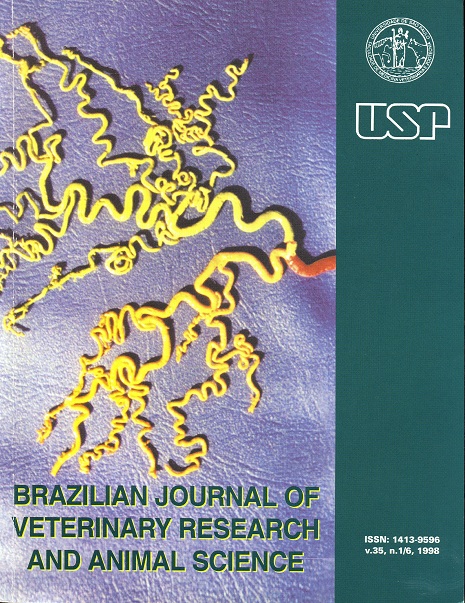Early embryonic death in mares: clinical and hormonal aspects
DOI:
https://doi.org/10.1590/S1413-95961998000400005Keywords:
Embryo mortality, Progesterone, Estrogen, Histopathology, EquineAbstract
The present study aimed to diagnose early embryonic death in 128 mares. Blood samples were collected at the 4th, 7th, 10th, 13th, 16th, 19th, 21st and 30th day after ovulation and the diameter of the corpus luteum was measured. The diameter and characteristics of the embryonic vesicle were evaluated by ultrasonography. Microbiology, cytology and histopathology were carried out in mares with embryonic death. Plasma oestrogen and progesterone concentration were measured by radioimmunoassay. From 128 mares, 17 (13.28%) showed early embryonic death. The embryonic losses took place at 19 days of pregnancy in 47.05% and at 21 days of pregnancy in 29.4% of the mares. The diameter of the corpus luteum in the mares that maintained pregnancy was similar to those with embryonic loss. Otherwise, the diameter of the embryonic vesicles was bigger at the 16th, 19th, 21st and 30th day of pregnancy when compared to the mares with embryonic loss. The mean plasma progesterone concentration was similar in both groups and the median plasma oestrogen concentration was higher in the pregnant mares. The cytological, microbiological and histopathological exams revealed that most of the mares had endometritis. Ultrasonography provided an early diagnosis of pregnancy (from the 12th day post-ovulation) and important information about the development of embryo and embryonic death. Endometritis was considered the main cause of embryonic losses in this study.Downloads
Download data is not yet available.
Downloads
Published
1998-01-01
Issue
Section
VETERINARY MEDICINE
License
The journal content is authorized under the Creative Commons BY-NC-SA license (summary of the license: https://
How to Cite
1.
Papa FO, Lopes MD, Alvarenga MA, Meira C de, Luvizotto MCR, Langoni H, et al. Early embryonic death in mares: clinical and hormonal aspects. Braz. J. Vet. Res. Anim. Sci. [Internet]. 1998 Jan. 1 [cited 2024 Apr. 18];35(4):170-3. Available from: https://www.revistas.usp.br/bjvras/article/view/5696





